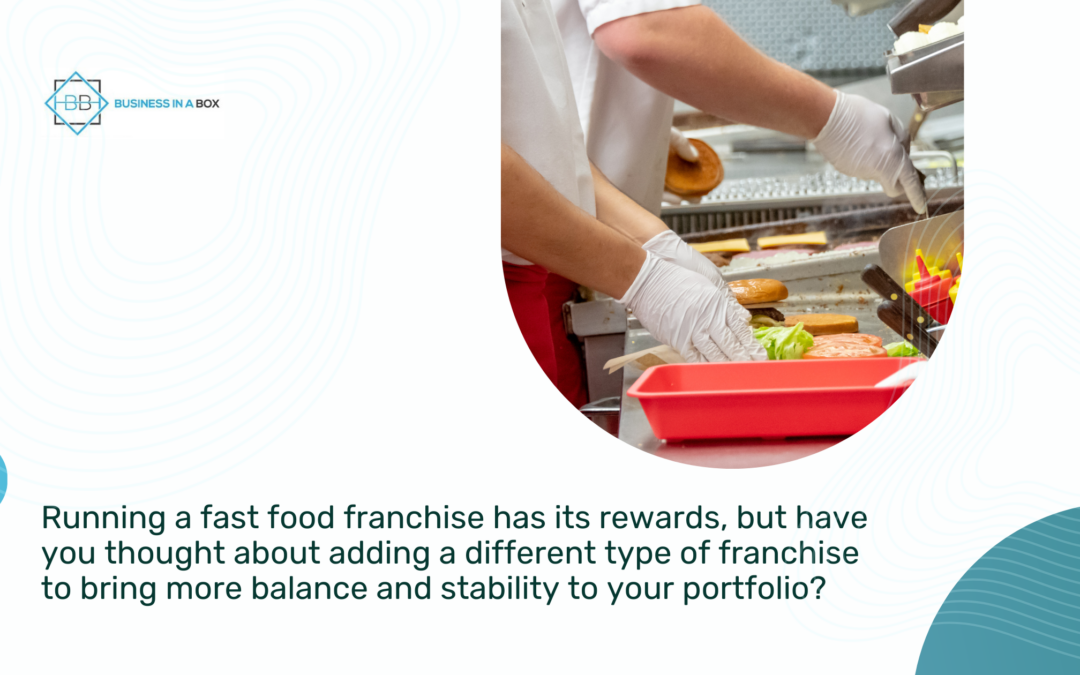Fast food franchising can be fulfilling, but it comes with unique challenges. Managing peak-hour staffing shortages, keeping operations running smoothly, and handling constant customer demands require significant energy. These challenges are part of the fast food world, but if you’re considering expanding your portfolio, exploring less labor-intensive franchises could provide stability and reduce stress.
Adding a franchise in a different industry doesn’t mean stepping away from fast food. It’s an opportunity to diversify while maintaining the strengths of your current business.
Step 1: Reimagine What Your Portfolio Could Look Like
Expanding your portfolio can create balance and help manage the highs and lows of running a high-energy business.
For example:
- Could adding a franchise with steady, predictable workflows reduce your operational stress?
- Would a business with simpler staffing needs help you focus more on strategic growth?
This approach complements the pace of fast food franchising and provides stability without disrupting your existing operations.
Framework: “The Growth and Peace Model”
When evaluating a new franchise, consider these factors:
- Scalability: Can this business grow steadily without constant involvement?
- Work-Life Balance: Does it allow you to step back while it runs efficiently?
- Sustainability: Are staffing and day-to-day tasks easier to manage?
Step 2: Industries to Explore
1. Home Services
Example: A painting or restoration franchise operates on pre-scheduled jobs, reducing day-to-day surprises. Your role becomes more focused on managing projects and less on solving last-minute crises.
2. Specialty Retail
Example: An eco-friendly store attracts loyal customers with steady demand. Operations focus on restocking and customer service rather than dealing with high turnover or complex staffing needs.
3. Professional Services
Example: A tutoring franchise relies on skilled professionals to deliver services, leaving you to focus on client relationships and operational oversight without constant hiring or training demands.
Step 3: Financial Considerations for Expansion
Adding a new franchise to your portfolio doesn’t have to disrupt your finances. Here’s how to evaluate options:
- Initial Investment vs. ROI: Home services franchises often have lower startup costs compared to fast food, offering steady returns with fewer resources.
- Staffing Costs: A specialty retail or professional services franchise typically requires fewer employees, reducing hiring and training expenses.
- Operational Simplicity: Franchises with predictable customer demand and simplified workflows provide more stability in cash flow and operations.
Step 4: Tools to Evaluate Your Next Opportunity
Expanding into another industry becomes easier with the right tools:
- Financial Models: Use tools like Excel to forecast costs, profitability, and time commitment. Compare how a new franchise fits with your current business.
- Research Platforms: Platforms like Franchise Gator allow you to compare opportunities based on your goals, budget, and lifestyle preferences.
- Consult a Franchise Advisor: Advisors can help you find franchises that align with your current operation and future ambitions.
Strengthen Your Portfolio
Fast food franchising offers excitement and growth, but adding a franchise with smoother operations can provide balance. A home services or tutoring franchise, for instance, might run more independently, letting you focus on strategic decisions instead of daily operations.
Interested in exploring new franchise opportunities?
Book a free consultation today and let’s find a franchise that aligns with your goals and strengthens your portfolio.

Recent Comments